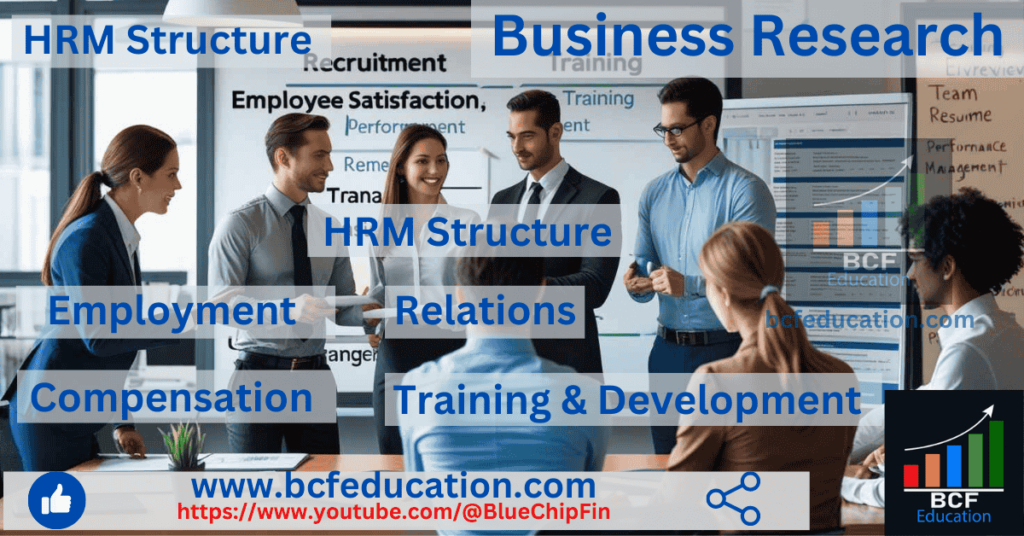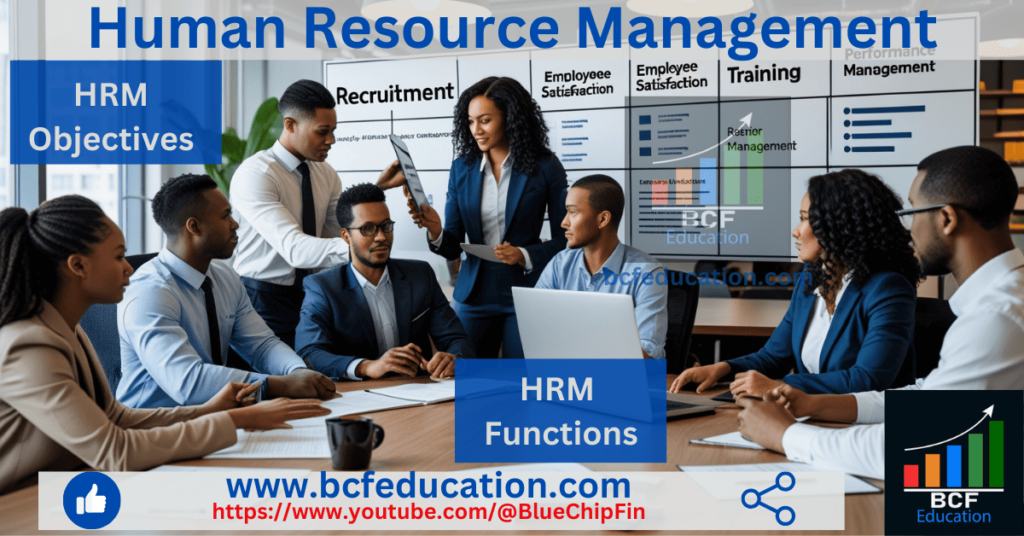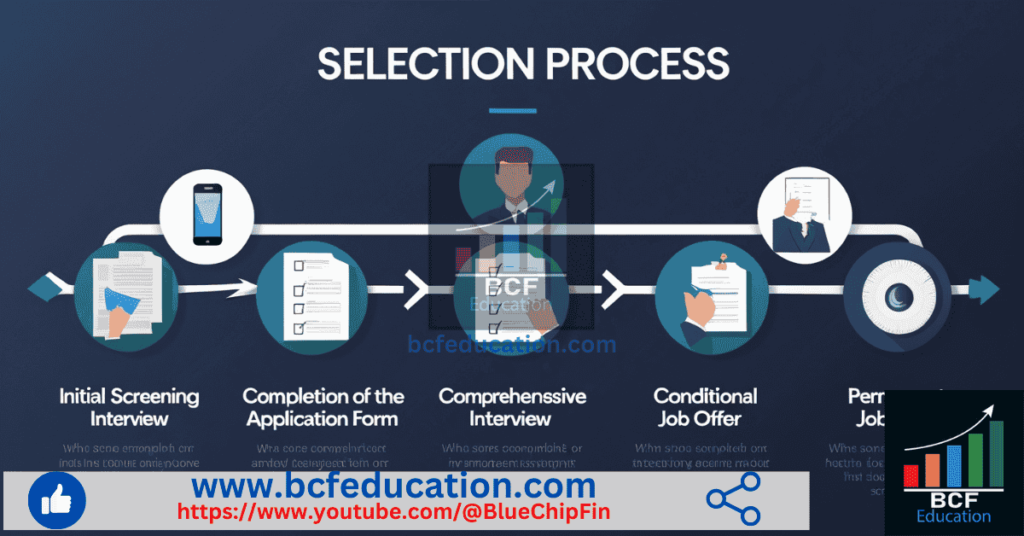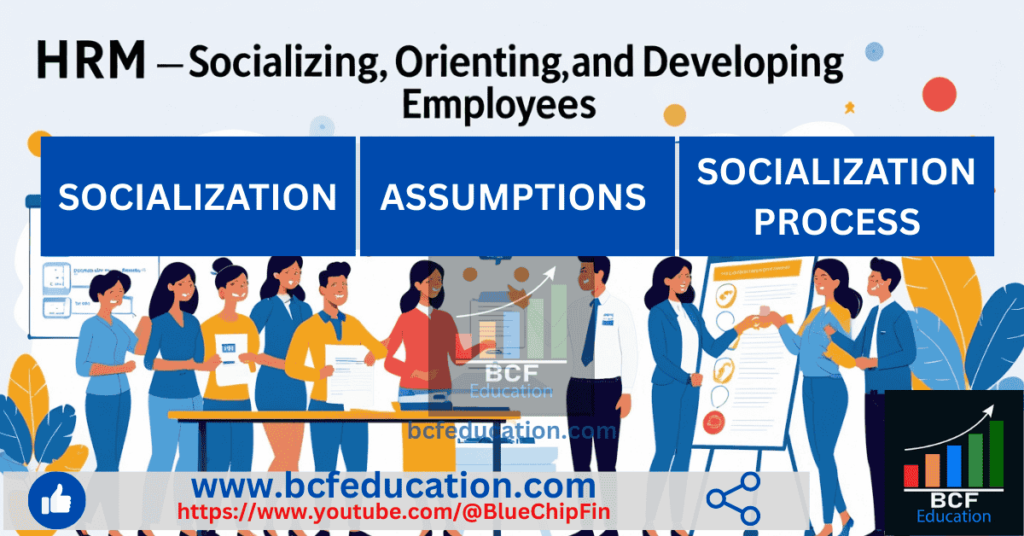Structure of HR Department and Employee relation function. In this blog post, we delve into the structure of the HR Department and explore its critical role in driving organizational success. Learn about the various employee-related functions that HR handles, such as recruitment and employment, training and development, compensation and benefits administration, and the pivotal employee relations function.
Discover how HR departments are structured to manage these responsibilities effectively, ensuring employee satisfaction, growth, and alignment with organizational goals. Whether you’re a student or a professional, this comprehensive guide will provide valuable insights into how HR fosters a harmonious, productive workplace while addressing employees’ needs. This topic is equally important for the students of the subject Human Resource Management across all the major Universities such as MU, DU, PU & others & across all business & finance disciplines.
Table of Contents
Structure of HR Department and Employee relation function
HRM Structure
Human Resource Management (HRM) responsibilities, like hiring, training, motivating employees, and maintaining their well-being, can be handled differently in every company. The way these tasks are distributed depends on the company’s size, goals, and structure. There’s no single “perfect” setup, as each company decides what works best for them.
Many HR departments also provide extra services, such as running a company credit union, arranging child care, providing security, or managing on-site medical and food services. Despite the variety, most non-union HR departments focus on four key areas:
- Employment: Finding and hiring the right people.
- Training and Development: Helping employees grow and improve their skills.
- Compensation and Benefits: Managing salaries, bonuses, and other perks.
- Employee Relations: Ensuring good communication and resolving workplace issues.
These areas are usually managed by a team under the guidance of a Vice President of Human Resources. Each manager handles specific responsibilities within these four areas to ensure the smooth running of HR functions.
Employment
The main goal of the employment function in Human Resource Management (HRM) is to manage hiring activities. It works closely with experts in areas like pay, benefits, or finance to start the process of bringing new employees into the company. This includes creating proper job advertisements to attract people who have the right skills and qualifications.
In companies with large HR departments, entry-level HR roles often include tasks like representing the company at job fairs and visiting college campuses to find potential candidates. Employment specialists in HR handle the task of reviewing résumés or job applications, either manually or using software. They reject candidates who don’t meet the job requirements and send the qualified applications to managers responsible for specific teams or departments, known as line managers.
Once line managers review these applications, they may ask HR to conduct initial interviews with chosen candidates. During these interviews, the employment specialist tries to match candidates to the specific needs of the team. Those who are a good fit are then scheduled for another interview, this time with the line manager, as part of the final selection process.

Training and Development
The training and development section in an organization focuses on helping employees grow and reach their full potential. Their main aim is to improve employees’ skills and abilities, which leads to better performance and higher productivity for the company.
The team in charge of training and development is often seen as the company’s “change agents.” These specialists help employees adjust to various changes within the organization. For example, changes might occur due to new government rules, company mergers, rising costs of things like oil or gas, or changes in strategy by competitors.
When the company makes big changes to its plans or structure, it might lead to things like job reassignments, layoffs, new teamwork roles, or even a shift in workplace culture. Employees might need extra training to adapt to these changes. Similarly, if there’s a new rule or policy, such as addressing ethical issues, employees need to understand what the rule means and how to follow it. For example, if a company creates rules about avoiding ethical violations, training helps employees recognize what counts as a violation and how to avoid it.
Training and development activities also include career guidance and employee counseling. These help individuals make informed career choices and reach their personal and professional goals effectively.
Compensation and Benefits
The Compensation and Benefits section of HR deals with paying employees and managing their benefits. While it may sound straightforward, this work is complex and requires detailed planning and analysis.
Compensation (Salaries and Pay):
- Salaries are not decided randomly. Companies use detailed studies and data to determine how much a job is worth.
- For example, a company president earns more than a maintenance worker because of the job’s responsibilities, but determining exact pay involves comparing job roles and responsibilities.
- Other factors, like market conditions (demand and supply of workers) and company goals (efficiency, creativity, or customer focus), also influence salaries.
- Within the company, salaries are set fairly based on skills, responsibilities, effort, and accountability, making sure they follow employment laws and avoid discrimination.
Benefits (Perks and Support for Employees):
- Managing benefits, like health insurance and retirement plans, has become more challenging as these offerings have become expensive. The benefits administrator (also known as the risk manager) works to create affordable, high-quality benefits packages that meet both employee needs and company budgets.
- To manage costs, companies often explore options like flexible benefits programs, utilization reviews, or cheaper health insurance plans.
- Benefits aren’t just about saving money—they are essential for attracting and keeping talented employees.
Role of the Benefits Administrator:
- The benefits administrator provides employees with information about their benefits through resources like company intranets or other tools.
- They help employees with tasks such as:
- Planning for retirement
- Choosing the best payout options
- Staying updated on tax law changes
- Helping executives with special perks
The benefits administrator has a big responsibility and plays an important role in the organization by supporting employees and contributing to their satisfaction and security.
Employees Relation
The Employee Relations (ER) function in HRM ensures healthy communication and resolves workplace issues. It differs from labor relations, which involve unions and require specific laws and processes. For example, unionized employees follow a formal grievance procedure, while nonunion employees may settle issues directly with supervisors or through ER specialists.
In nonunion environments, ER specialists focus on open communication, help resolve conflicts, and ensure rules are clearly understood and applied fairly. They also handle disciplinary actions consistently.
HRM Communications focus on keeping employees informed about company policies, updates, and procedures. Effective communication builds trust, improves loyalty, and ensures employees feel valued. Key elements include management support, clear messaging, opportunities for feedback, and reliable information sharing.
Key Points About Effective HR Communication
- Top Management Support: Effective communication programs must have full backing from the company’s top management to show their importance and build trust among employees.
- Upward Communication: Employees closest to the work may have crucial information, so communication should flow up the hierarchy as well as down and across.
- Choosing Relevant Information: Only essential information, like company goals, production updates, and HR policy changes, should be shared to avoid information overload.
- What-if, So-what Test: Before sharing, HR should ask: What if this isn’t shared? Will employees care? This helps prioritize important updates.
- Employee Feedback: Feedback systems like surveys or suggestion boxes are vital to measure communication effectiveness and involve employees.
- Information Sources: Immediate supervisors play a key role in communication. HR must train and equip them with accurate data to address employees’ concerns.
- Employee Relations Role: The department also tracks employment stats, ensures safety and well-being at work, and handles employee outings and recognition programs.
- Building Community: Activities like recreational programs, team outings, and family benefits aim to foster employee loyalty and strengthen workplace bonds.
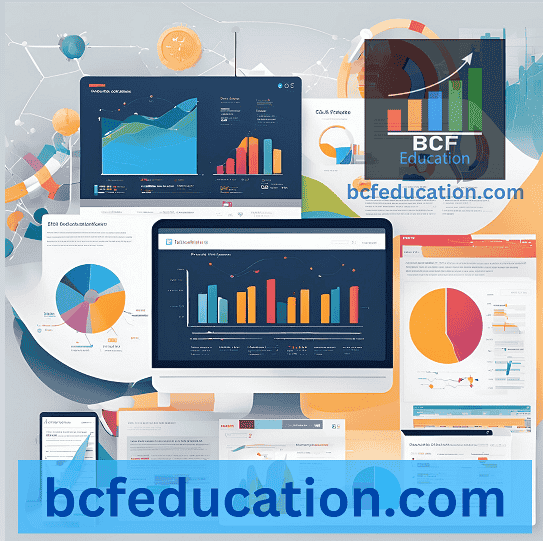
Related Articles
What is Human Resource Management, Objectives and Functions of HRM.

